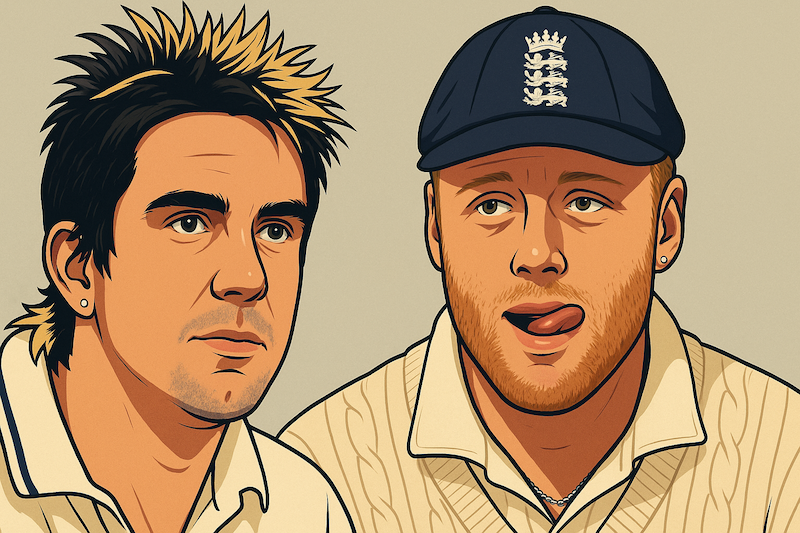
Grace flowed from his bat as if it were second nature — Saeed Anwar turned every innings into art, his wristy flicks and silken drives making him Pakistan’s most stylish opener of the 1990s. Beyond elegance, he carried the weight of his team’s batting, standing tall as the anchor of Pakistan cricket through a defining era.
Early Life and Debut
- Started his career as a lower-order batsman and left-arm spinner before his elegant batting secured him a move to the top of the order.
- Made his ODI debut on January 1, 1989, against the West Indies, though his initial matches were modest.
- Announced himself in the 1990 Benson & Hedges tri-series with a brilliant 126 off 99 balls against Sri Lanka, cementing his place as Pakistan’s opener.
- Made his Test debut on November 23, 1990, against the West Indies, though it began with the disappointment of a pair.
- Proved his ability in the longer format with a commanding 169 against New Zealand in 1994, establishing himself as Pakistan’s premier opener.
The Batting Artist
- Saeed Anwar was famous for his wristy flicks and smooth cover drives, which made him one of the most stylish batsmen of his era.
- His trademark flick off the pads often raced to the boundary, a shot that became his signature.
- He combined grace with the ability to dominate even the best bowlers in the world.
- Strong on the off-side, his cuts and drives regularly pierced the gaps and frustrated opponents.
- More than just the runs he scored, fans loved watching him because his batting looked graceful and effortless.
Sharjah Specialist
- Saeed Anwar scored 7 ODI centuries at Sharjah, a record he shares with Sachin Tendulkar, and he did it in fewer matches.
- He was the second player to score 3 consecutive ODI centuries — after Zaheer Abbas (1982) - achieving the feat at Sharjah in 1993–94.
- He often set up Pakistan’s wins in desert tournaments, repeatedly finishing as their key run-getter at the venue.
- His runs came in high-pressure India–Pakistan and triangular events, where conditions tested timing and patience.
- The “Sharjah Specialist” tag became part of his identity with fans and rivals alike.
Explore More Stories

2005 Ashes: The Summer Cricket Became Theatre
The 2005 Ashes was more than just a cricket series. It was a rollercoaster of emotion, courage, and unforgettable moments that brought Test cricket back to life. England’s long wait finally ended, and the world watched history unfold.

What Happened to Zimbabwe Cricket? The Rise, Fall, and Fight for Survival
Once they challenged the world’s best, now they struggle to stay afloat. Zimbabwe cricket’s journey from the glory of 1999 to years of chaos and heartbreak is a story of politics, power, and lost pride, and of a nation still dreaming of revival.
Defining Innings
- His 176 at The Oval in 1996 against England was one of his finest Test knocks overseas, anchoring Pakistan’s dominance in a challenging away series.
- On May 21, 1997, Saeed Anwar smashed 194 against India in Chennai, then the highest ODI score in history, battling cramps with a runner; the knock included 22 fours and 5 sixes and stood as the world record for nearly 13 years.
- In the 1998–99 Asian Test Championship, he scored an unbeaten 188 against India at Eden Gardens, becoming only the third Pakistani opener to carry his bat through a Test innings.
- At the 1999 World Cup semi-final in Manchester, his unbeaten 113 against New Zealand carried Pakistan into the final, underlining his big-match temperament.
- In the 2003 World Cup, he struck his 20th and final ODI century — 101 against India at Centurion - a defiant knock in a high-pressure contest.
Faith and Farewell
- In 2001, Saeed Anwar’s daughter, Bismah, passed away after a prolonged illness, a tragedy that profoundly changed his life.
- Turning to faith, he became deeply involved with Islamic preaching and the Tablighi Jamaat, dedicating himself to spiritual causes.
- He returned to cricket with a new perspective, and his 2003 World Cup century against India was dedicated to his late daughter.
- After the World Cup, he lost his place in the side and chose to retire gracefully, saying he felt “unwanted” and did not want to be pushed out.
- Unlike many cricketers who pursued commentary or coaching, Anwar committed himself to religious work and family life, leaving a legacy of both elegance on the field and humility off it.
Career Totals
| Format | Matches | Runs | Average | Centuries |
|---|---|---|---|---|
| Tests | 55 | 4,052 | 45.52 | 11 |
| ODIs | 247 | 8,824 | 39.21 | 20 |
| World Cups | 21 | 915 | 53.82 | 3 |
Career Highlights
- Most ODI centuries for Pakistan (20) — a national record that still stands.
- Pakistan’s leading run-scorer in three consecutive World Cups (1996, 1999, 2003).
- Carried his bat with 188* against India at Kolkata in 1999, becoming only the third Pakistani opener to achieve this in Tests.
- Second player in history to score 3 consecutive ODI centuries (after Zaheer Abbas), achieved in 1993.
- Fastest Pakistani of his era to reach 8,000 ODI runs, showing unmatched consistency at the top.
- Named Wisden Cricketer of the Year in 1997, recognized for his record-breaking 194 vs India and elegant batting displays.
- Awarded the Pride of Performance by the Government of Pakistan in 2000 for his outstanding contributions to cricket.
- Inducted into the PCB Hall of Fame in 2024, honored alongside other Pakistan legends for his impact on the game.
- Celebrated as an ambassador of Pakistan cricket, inspiring generations with his artistry and grace at the crease.
Legacy
Saeed Anwar’s legacy goes beyond his elegant stroke-play. He redefined the role of an opener for Pakistan, showing that style and substance could coexist at the highest level. His ability to dominate world-class attacks while maintaining composure set a standard for those who followed, inspiring a generation of young cricketers in Pakistan to believe that they too could take on the world.
Even after his retirement, Anwar’s story has continued to resonate because of its balance of brilliance and humanity. His record-breaking feats remain part of cricket’s folklore, but his personal resilience and spiritual journey gave his career a depth rarely seen in sport. To this day, his name evokes both cricketing excellence and the reminder that even great players carry stories beyond the boundary.
















